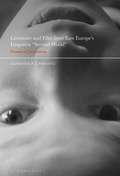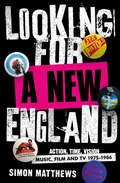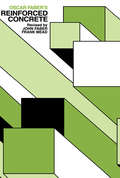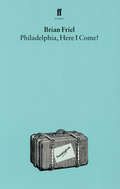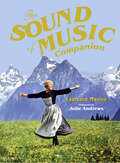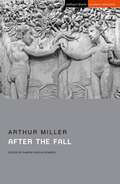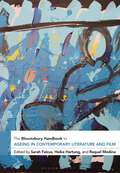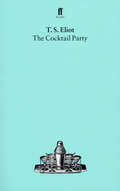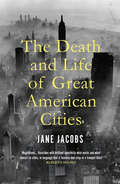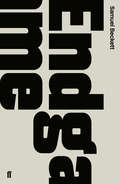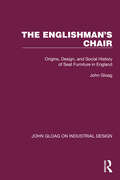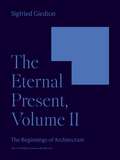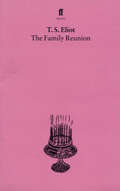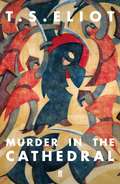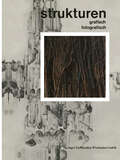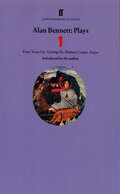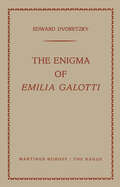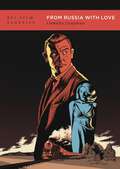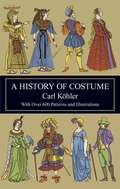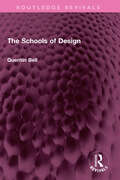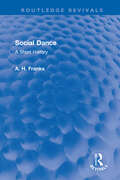- Table View
- List View
Literature and Film from East Europe’s Forgotten "Second World": Essays of Invitation
by Gordana P. CrnkovicCzechoslovakia, Yugoslavia-no longer on the map. East Europe of the socialist period may seem like a historical oddity, apparently so different from everything before and after. Yet the masterpieces of literature and cinema from this largely forgotten “Second World,” as well as by the authors formed in it and working in its aftermath, surprise and delight with their contemporary resonance. This book introduces and illuminates a number of these works. It explores how their aesthetic ingenuity discovers ways of engaging existential and universal predicaments, such as how one may survive in the world of victimizations, or imagine a good city, or broach the human boundaries to live as a plant. Like true classics of world art, these novels, stories, and films-to rephrase Bohumil Hrabal-keep “telling us things about ourselves we don't know.” In lively and jargon-free prose, Gordana P. Crnkovic builds on her rich teaching experience to create paths to these works and reveal how they changed lives.
Looking for a New England: Action, Time, Vision: Music, Film and TV 1975 - 1986
by Simon MatthewsWhat happened to UK cinema and TV when swinging London ended? Looking for a New England covers the period 1975 to 1986, from Slade in Flame to Absolute Beginners.A carefully researched exploration of transgressive films, the career of David Bowie, dystopias, the Joan Collins ouevre, black cinema, the origins and impact of punk music, political films, comedy, how Ireland and Scotland featured on our screens and the rise of Richard Branson and a new, commercial, mainstream. The sequel to Psychedelic Celluloid, it describes over 100 film and TV productions in detail, together with their literary, social and musical influences during a time when profound changes shrank the size of the UK cinema industry.Praise for Psychedelic Celluloid:'Addresses everything with a thoroughness and eye for detail that's hugely impressive' - Irish News'The ultimate catalogue of musical references in film and TV from the swinging sixties' - Glass Magazine'A must-purchase for fans of British films and pop music' - Goldmine
Oscar Faber's Reinforced Concrete
by John G Faber F.H. MeadThis E. & F. N. Spon title is now distributed by Routledge in the US and Canada. It contains detailed coverage of the basic theory of reinforced and prestressed concrete, and demonstrates a wide range of practical applications. Examples and diagrams are used extensively throughout for ease of understanding.
Philadelphia, Here I Come: Philadelphia, Here I Come!; The Freedom Of The City; Living Quarters; Aristocrats; Faith Healer; Translations
by Brian FrielFed up with the dreary round of life in Ballybeg, with his uncommunicative father and the humiliating job in his father's grocery shop, with his frustrated love for Kathy Doogan who married a richer, more successful young man and with the total absence of prospect and opportunity in his life at home, Gareth O'Donnell has accepted his aunt's invitation to come to Philadelphia. Now, on the eve of his departure, he is not happy to be leaving Ballybeg.With this play Brian Friel made his reputation and it is now an acknowledged classic of modern drama.
The Sound of Music Companion: The Official Companion To The World's Most Beloved Musical
by Laurence MaslonThe definitive book on the world's most beloved musical, TheSound of Music Companion charts the incredible and enduring story of Maria von Trapp and her story over the last hundred years – from Maria's birth in Vienna in 1905 to the 50th anniversary of the film's release in 2015.
After the Fall: The Misfits; After The Fall; Incident At Vichy; The Price; Creation Of The World; Playing For Time (Student Editions)
by Arthur Miller'Much like Mr. Miller, Quentin is a witness to alarming public and personal catastrophes: the stock market crash, the Holocaust, the McCarthy witchhunts and the self-destruction of a show business idol to whom he is married.' NEW YORK TIMESHaunted by past romantic failures, Quentin, a New York City Jewish intellectual, retreats into his mind as he debates marrying for a third time: as he revisits past loves and losses, his mind and memory fragments under philosophical questions; are our failures really just our own? Or is possible to hide away from the mistakes of the past?One of Miller's most personal plays, After the Fall takes place almost entirely inside the mind of the play's protagonist, who is often read as a stand-in for the playwright himself. Touching on themes of the Holocaust, McCarthyism and inherited sin, the play is one of the most discussed within Miller's canon.This Methuen Drama Student Edition is edited by Ramón Espejo-Romero, with commentary and notes that explore the play's production history (including excerpts from an interview with Michael Blakemore, former Associate Director of the Royal National Theatre,) as well as the dramatic, thematic and academic debates that surround it.
The Bloomsbury Handbook to Ageing in Contemporary Literature and Film (Bloomsbury Handbooks)
by Sarah FalcusAcross more than 30 chapters spanning migration, queerness, and climate change, this handbook captures how the interdisciplinary and intersectional endeavor of Age(ing) studies has shaped contemporary literary and film studies. In the early 21st century, the literary study of age and ageing in its cultural context has 'come of age': it has come to supplement and challenge a public discourse on ageing seen mainly as a political and demographic 'problem' in many countries of the world. Following a tripartite structure, it looks first at literary and film genres and how they have been shaped by knowledge about age and ageing, incorporating both narrative genres as well as poetry, drama and imagery. The second section includes chapters on key themes and concepts in Age(ing) Studies with examples from film and literature. The third section brings together case studies focussing on individual artists, national traditions and global ageing. Containing original contributions by pioneers in the field as well as new scholars from across the globe, it brings together current scholarship on ageing in literary and film studies, and offers new directions and perspectives.
The Cocktail Party
by T. S. Eliot'Obviously something more than a successful play, it is the practical demonstration of a patently conceived theory of dramatic form, and as such of high historical interest.' Times Literary Supplement'Eliot has attempted here something very daring and well worth doing. He has taken the ordinary West End drawing room comedy convention - understatement, upper-class accents and all - and used it as a vehicle for utterly serious ideas.' Observer
The Death and Life of Great American Cities: 50th Anniversary Edition (Peregrine Bks.)
by Jane JacobsIn this classic text, Jane Jacobs set out to produce an attack on current city planning and rebuilding and to introduce new principles by which these should be governed. The result is one of the most stimulating books on cities ever written. Throughout the post-war period, planners temperamentally unsympathetic to cities have been let loose on our urban environment. Inspired by the ideals of the Garden City or Le Corbusier's Radiant City, they have dreamt up ambitious projects based on self-contained neighbourhoods, super-blocks, rigid 'scientific' plans and endless acres of grass. Yet they seldom stop to look at what actually works on the ground. The real vitality of cities, argues Jacobs, lies in their diversity, architectural variety, teeming street life and human scale. It is only when we appreciate such fundamental realities that we can hope to create cities that are safe, interesting and economically viable, as well as places that people want to live in.'Perhaps the most influential single work in the history of town planning... Jacobs has a powerful sense of narrative, a lively wit, a talent for surprise and the ability to touch the emotions as well as the mind' New York Times Book Review
Endgame: A Play In One Act: A Mime For One Player: Act Without Words (Theatrical Notebooks Of Samuel Beckett Ser. #Vol. 2)
by Samuel BeckettOriginally written in French and translated into English by Beckett, Endgame was given its first London performance at the Royal Court Theatre in 1957.HAMM: Clov!CLOV: Yes.HAMM: Nature has forgotten us.CLOV: There's no more nature.HAMM: No more nature! You exaggerate.CLOV: In the vicinity.HAMM: But we breathe, we change! We lose our hair our teeth! Our bloom! Our ideals!CLOV: Then she hasn't forgotten us.
The Englishman's Chair: Origins, Design, and Social History of Seat Furniture in England
by John GloagOriginally published in 1964, The Englishman’s Chair is a history of English chairs, written as a continuous story from the 15th to the 20th Century and because of the revealing powers inherent in chair-making and design, it is also an unconventional footnote to English social history. The changes in taste, and fashion, the increase of skill, the introduction of new materials and the long battle between dignity and comfort are discussed, as is the impact that modern industrial designers have had on chair design.
The Englishman's Chair: Origins, Design, and Social History of Seat Furniture in England
by John GloagOriginally published in 1964, The Englishman’s Chair is a history of English chairs, written as a continuous story from the 15th to the 20th Century and because of the revealing powers inherent in chair-making and design, it is also an unconventional footnote to English social history. The changes in taste, and fashion, the increase of skill, the introduction of new materials and the long battle between dignity and comfort are discussed, as is the impact that modern industrial designers have had on chair design.
The Eternal Present, Volume II: The Beginnings of Architecture (The A. W. Mellon Lectures in the Fine Arts #6)
by Sigfried GiedionAn original account of ancient Egyptian and Sumerian architecture from the acclaimed architectural historianIn The Beginnings of Architecture, Sigfried Giedion examines the architecture of ancient Egypt and Sumer. These early builders expressed an attitude of immense force when they confronted their structures with open sky. Giedion argues that it was during these periods that the problem of constancy and change flared up with an intensity unknown in any other period of history, and resolved eventually into the first architectural space conception, the automatic, psychic recording of the visual environment.
The Family Reunion: With an introduction and notes by Nevill Coghill (Faber Paper-covered Editions Ser.)
by T. S. EliotEliot's haunting verse play, set in a country house in the north of England, was performed at the Westminster Theatre in London in March 1939, six months before the outbreak of war.'What is wonderful is the marvellous opening out of consciousness, the flowering of meaning, which makes the play an account of a spiritual experience. There are passages of great poetic beauty, and statements which are the fruits of a lifetime devoted to poetry.' Listener
Murder in the Cathedral
by T. S. EliotMurder in the Cathedral, written for the Canterbury Festival on 1935, was the first high point on T. S. Eliot's dramatic achievement. It remains one of the great plays of the century. Like Greek drama, its theme and form are rooted in religion and ritual purgation and renewal, and it was this return to the earliest sources of drama that brought poetry triumphantly back to the English stage.
Strukturen Grafisch | Fotografisch: 20 Farbfotos Italienischer Maler 25 Strukturstudien Junger Grafiker
by Hermann SchardtWir leben im Zeitalter der Internationalen Partnerschaften. Poli tische, kulturelle, wirtschaftliche Interessengemeinschaften werden ins Leben gerufen, gepflegt und gefördert. Es besteht immer und trotz aller bedrängenden Geschehnisse die berechtigte Hoffnung, daß über die Narben der Geschichte: über die Staatsgrenzen hinaus eine wahre Union die Völker verbinden wird. So mag auch das vorliegende Buch in einem bestimmten Sinne als ein beschei dener Beitrag zu dieser erstrebenswerten Entwicklung gedeutet werden. Bekannte Italienische Künstler folgten einer Anregung der Ferrania, Malland, des italienischen Weltunternehmens auf dem Gebiete der Fotografie, und suchten durch das Objektiv der Kamera und die Mittel der Farbfotografie in der Natur und in den Dingen jene Ord nungsgefüge neu zu entdecken, denen sie sonst aus Innerer Sicht mit den Ausdrucksmitteln des Malers Gestalt verleihen. Die gefun denen Strukturen legen Zeugnis ab über ihr Beobachtungsver mögen und vermitteln zugleich einen Eindruck Ihrer Vorstellungs weit. Sie weisen auch auf Möglichkeiten der Farbfotografie hin, die einen weiten Spielraum bieten. 5 Diesen Farbfotos stehen Studienarbeiten gegenüber, die an der Folkwangschule für Gestaltung, Essen, aus einer gewissenhaften und ins kleinste Detail gehenden Beobachtung stofflicher Struk turen entstanden sind. Nach Möglichkeit wurde Wert darauf gelegt, den Besonderheiten dieser Zeichnungen durch Wiedergabe in Originalgröße gerecht zu werden. Für den geneigten Betrachter möge diese Symbiose von Technik und kreativem Humanum, wie sie in den folgenden Blättern sichtbar wird, als Anregung wirksam werden, den Reichtum der Sprache der Naturformen in bildnerischen Zeugnissen junger deutscher und bekannter italienischer Künstler zu erleben.
Alan Bennett Plays 1: Forty Years On, Getting On, Habeas Corpus and Enjoy
by Alan BennettThis collection of Alan Bennett's work includes his first play and West End hit, Forty Years On, as well as Getting On, Habeus Corpus, and Enjoy.Forty Years On'Alan Bennett's most gloriously funny play ... a brilliant, youthful perception of a nation in decline, as seen through the eyes of a home-grown school play ... a classic.' Daily MailGetting OnWinner of the Evening Standard Best Comedy Award in 1971, Getting on is an account of a middle-aged Labour MP, so self-absorbed that he remains blind to the fact that his wife is having an affair with the handyman, his mother-in-law in dying, his son is getting ready to leave home, his best friend thinks him a fool and that to everyone who comes into contact with him he is a self-esteeming joke.Habeus Corpus'After two elegiac comedies about the decline of old England, Mr Bennett has now written a gorgeously vulgar but densely plotted facre that is a downright celebration of sex and the human body ... a combination of hurtling action with verbal brilliance.' GuardianEnjoyEnjoy uncannily foresaw the attitudes to English working-class life now enshrined in themeparks. 'The classic tug in Bennett between childhod Yorkshire and intellectual sophistication has never been better, or more daringly expressed.' Observer
The Drawings of Raymond Lafage
by Nathan T. WhitmanList of Illustrations xiii The Life I The Style 19 Contents The Drawings 40 Appraisal and Evaluation 64 Bibliography 79 Notes 82 Index 90 Illustrations vii The French seventeenth century remains at the present moment one of the few areas in the history of later western art which still needs intensive study. Even the work of Pous sin, its most outstanding painter and the object of a continu ous stream of encomiums stretching back to his own life time, has only recently begun to be explored with the full scholarly apparatus of contemporary art history, and a definitive monograph is probably still some years in the future. La Tour and the Le Nain brothers have been intro duced into the company of great artists only within the past Foreword quarter century, and with significant discoyeries still being made complete evaluations are as yet not even to be contem plated. After numerous casual encounters with the frequent ly handsome if astonishingly varied canvases of Bourdon, one becomes suspicious of the ever repeated dismissal of his work as merely eclectic and longs for a revealing analysis of his purposes and patronage. The harsh Latinity of Valentin, the sumptuous strangeness ofVignon, the audacious languor of Antoine Coypel, these are some of the many topics that still await careful investigation and evaluation.
The Enigma of Emilia Galotti
by Edward DvoretzkyThe purpose of this study is to report the reactions and criticism of those German, Swiss, and Austrian authors who commented on Les sing's Emilia Galotti from the time of its creation to the twentieth century and to note the various degrees to which it influenced writers of different personal and literary bent. It will be seen that the repre sentatives of a given literary trend, although regarding the play primarily in the light of their own ideals, were not necessarily in accord with one another over certain of its aspects. Emilia Galotti is especially suited to this kind of investigation because it took form in an age when interest in principles of dramatic composition was particularly intense, and because it was written by a figure who was perhaps most influential in the discussions centering on them. Emilia Galotti further lends itself to this study because, despite the fact that it has remained an extremely enigmatic work, it was and continues to be a highly popular play, having been. translated into at least twelve foreign languages and having also had an overture written in its honor.
From Russia With Love (BFI Film Classics)
by Llewella ChapmanOften hailed as the 'best' James Bond film, From Russia With Love (1963) is celebrated for its direction by Terence Young, memorable performances from Sean Connery in his second outing as 007, Pedro Armendáriz as Kerim, Lotte Lenya as the lesbian villain Colonel Rosa Klebb, and Robert Shaw as Red Grant, the sexually ambiguous SPECTRE assassin. And regardless of its place within the longest-running continuous film series in cinema history, it is also an outstanding example of the British spy thriller in its own right.Llewella Chapman's study of the iconic film pinpoints its place within the James Bond film franchise, and its significant cultural value to critics and fans as well as this film's important place within British cinema history more widely. Drawing on a broad range of archival sources, Chapman traces the film's development and production history, including its adaptation from Ian Fleming's source novel, as well as its reception and lasting impact. Chapman also considers the film's portrayal of gender politics, with its queer villains counterpoised with the heterosexual couple Bond and his Russian counterpart Tatiana Romanova, the context of Cold War politics, and the influence of Alfred Hitchcock's North by Northwest (1959).
A History of Costume (Dover Pictorial Archive Ser.)
by Carl KöhlerEgypt, Babylon, Greece up through 19th-century Europe; based on surviving pieces, art work, much more. Includes many clear, measured patterns for reproducing historic costumes. Full text. 595 illustrations. .
The Schools of Design (Routledge Revivals)
by Quentin BellFirst published in 1963, The Schools of Design is a history of English Art Education. The story of the genesis of English art schools is one of the fierce conflicts in which private feuds mingle with questions of principle. It is a story of administrative chaos and open scandal in which some long-forgotten figures are involved; others – such as Haydon, Gladstone, Alfred Stevens, Dyce, Stafford Northcote, Etty and Henry Role – appear in a new role. In itself this forms an entertaining study full of incident and drama. Many of the problems that presented themselves in the 1840’s are still with us today and no one who is interested in the place of art in our society can afford to neglect the lessons of the Schools of Design. This book will be of interest to students of art and history.
The Schools of Design (Routledge Revivals)
by Quentin BellFirst published in 1963, The Schools of Design is a history of English Art Education. The story of the genesis of English art schools is one of the fierce conflicts in which private feuds mingle with questions of principle. It is a story of administrative chaos and open scandal in which some long-forgotten figures are involved; others – such as Haydon, Gladstone, Alfred Stevens, Dyce, Stafford Northcote, Etty and Henry Role – appear in a new role. In itself this forms an entertaining study full of incident and drama. Many of the problems that presented themselves in the 1840’s are still with us today and no one who is interested in the place of art in our society can afford to neglect the lessons of the Schools of Design. This book will be of interest to students of art and history.
Social Dance: A Short History (Routledge Revivals)
by Arthur FranksOriginally published in 1963 and authored by the then Editor of the Dancing Times, this was a pioneer work discussing not only the origins and development of many social dance forms from early times, but also relating these forms to their environment. As well as its role in social history, the book analyses the role of dance as a prime creative power in Renaissance spectacles which depicted and celebrated diplomatic, military and regal occasions. After a wide-ranging introductory chapter on the origins of dancing, the book takes the reader through the centuries, discussing in turn the Basse Danse and the Moresco of the Middle Ages, the Pavane, Galliard and Courante of the 16th Century, the Minuet of the 17th & 18th, the Allemande, the Waltz and the Polka as well as Jazz, the Cha Cha Cha, the Jive and Twist.
Social Dance: A Short History (Routledge Revivals)
by Arthur FranksOriginally published in 1963 and authored by the then Editor of the Dancing Times, this was a pioneer work discussing not only the origins and development of many social dance forms from early times, but also relating these forms to their environment. As well as its role in social history, the book analyses the role of dance as a prime creative power in Renaissance spectacles which depicted and celebrated diplomatic, military and regal occasions. After a wide-ranging introductory chapter on the origins of dancing, the book takes the reader through the centuries, discussing in turn the Basse Danse and the Moresco of the Middle Ages, the Pavane, Galliard and Courante of the 16th Century, the Minuet of the 17th & 18th, the Allemande, the Waltz and the Polka as well as Jazz, the Cha Cha Cha, the Jive and Twist.
